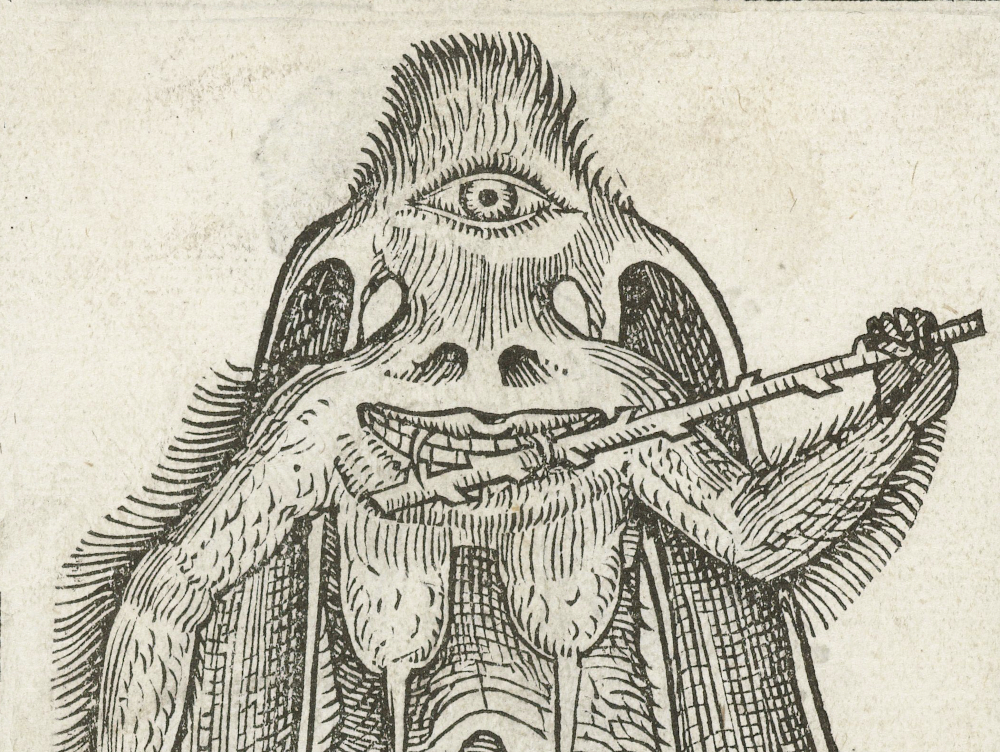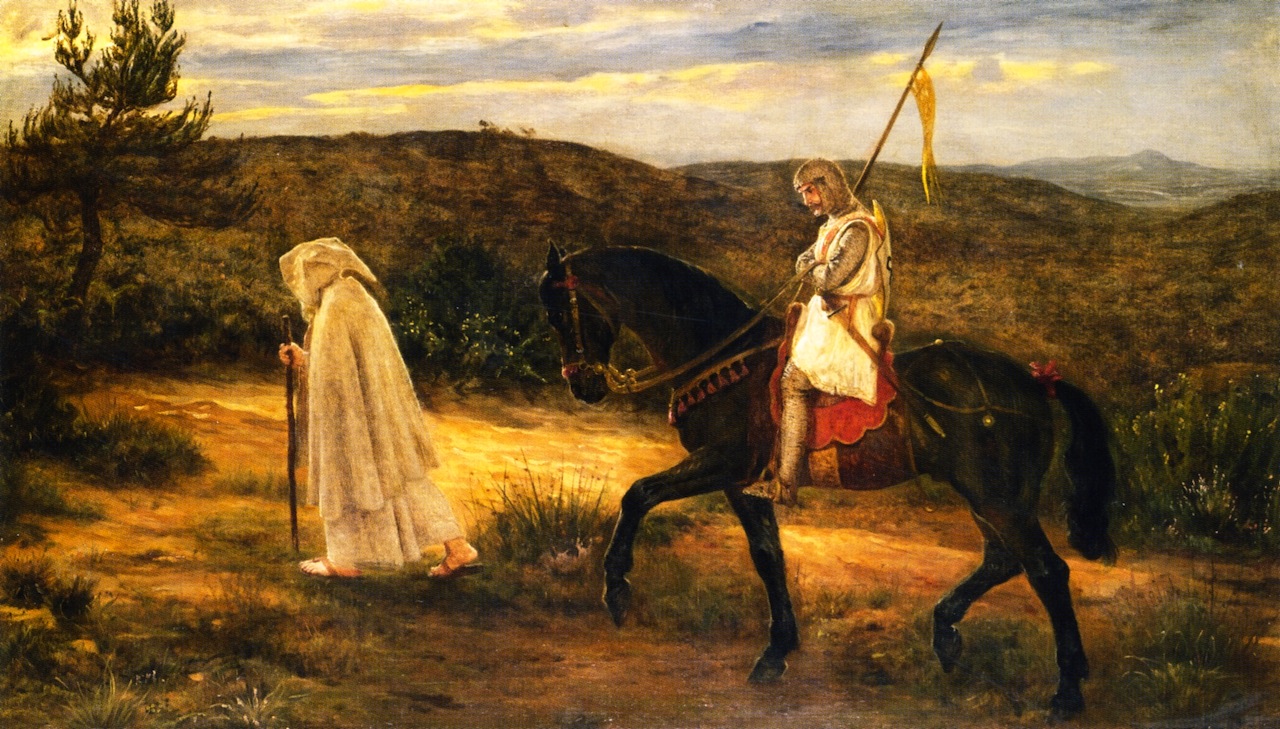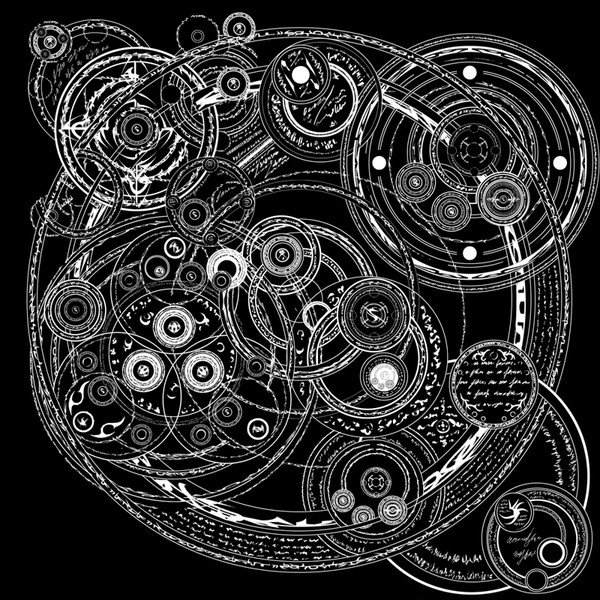ESSAYS ON GAME DESIGN
Essay Thirteen: Scientifica Magica
Now before anyone jumps to the wrong conclusion, based only upon the title of this post, let me state clearly that I am not one of those gamers or writers who favor turning magic (in either game or fiction) into a mere exercise in science and technology under a different name. I am not for “scientificizing magic.”
I am not in favor of turning either game magic or fictional magic into science by another name, nor am I one of those who favor making magic operate under closely regulated and studied rules of scientific function or with mathematical precision. I like my magic wild, uncontrolled to some degree, definitely unpredictable, prone to malfunction and misfire, and in most other ways outright dangerous.

image: http://d15osn4tlmtdxb.cloudfront.net/wp-content/uploads/2006/03/img-Burne-Jones.jpg
(You know, much like a woman. Now I say that half-jokingly, but only half jokingly. To me science and technology should operate like a man – with precision, with mathematical certainty, with rules, with predictability. Now am I saying all men are this way? God no, and I can only wish. I know real people as they truly are, you see, and that is merely a philosophical postulate of how male types would operate ideally, logically, and rationally. Sort of like saying all Vulcans should be like Spock.
On the other hand women should be unpredictable, without Newtonian mathematical precision, with emotional flare and passion, fuzzy and quantum at the edges, hard to pin down, and in more than one way, truly dangerous. Generalizations of course, and type generalizations as well, but they make the point. Magic to me should not be Science and science should not be magic despite all the modern Geekery in games and fiction that would have them be, in effect, merely interchangeable and fungible concepts for the same thing.)
Science should be amazing in what it can achieve but predictable in how it operates, Magic should be almost miraculous in what it achieves but largely unpredictable and untamed in both technical function and in its methods of operation. The very point of science is to be controlled and safe, reliable and commonplace, not dangerous, for a dangerous and rare science defeats the very purpose and function of being scientific. On the other hand the very essence of magic is to be rare, uncontrolled – especially in comparison to science and the mundane – and unreliable. For indeed if you have a magic that is too easy to control, utterly predictable, reliable, safe, and ubiquitous then you don’t really have Magic at all, you simply have science under the flimsy and inaccurate guise and faulty nomenclature of “magic.”)
Now all of that being said there is one way in which I favor the intersection of magic and science and that is in the analytical and detective capabilities of modern science, which often border closely upon the frontiers of what I would actually call magic. Or at least magical in effect.
Being an amateur scientist and having a near lifelong interest in physics, forensics, archaeology, medicine, chemistry and biochemistry I often keep up to date on new papers and techniques in those fields and have recently been studying several superb new and relatively new methods of analyzing, collating, detecting, examining, and understanding archaeological and forensic evidence. Such as the use of LIDAR, magnetic surface and subsurface scans, satellite imagery sweeps in the infrared, multiple data source computer modeling, etc.
In thinking on those things and what they can accomplish it has recently occurred to me that a new type of “magic” (of a kind rarely ever encountered in gaming and fiction) could easily be developed to mimic such scientific technologies without necessarily being limited to being scientific in operation.
For instance I have recently begun developing “spells” for both game and fictional use that mimic such new discovery techniques without presenting themselves in a scientific or predictable manner. I won’t specifically describe these “magics” in detail or enumerate the spells themselves as that would take too long and as one could easily develop multiple spells from these general categories in any case, but I will briefly describe a couple of these “spell types” for you to consider in developing your own magics in this regard.
1. REENLIVENING SPELLS – Spells which cast a glamour over an area or other target and can then present, in a complex still or even a moving image, the events that occurred long ago in a particular area, concerning certain bodily remains, etc. For instance the spell could take you back into time (figuratively speaking) to see events that had occurred long in the past, such as making you privy to a particular conversation, an event in the life of a person long dead, to witness a long forgotten or unrecorded (or even an historical) event so that you could view such things occurring for yourself. These would be very different spells from something like Speak with Dead because you would be an observer and witness, not a conversant, and such results would not be limited to mere third party descriptions but rather you would be a first hand, though passive, observer.
2. RECONSTRUCTION SPELLS – Spells which cast a glamour over an area of building or object and that allows you to see that area or building or object as it looked at another period (of the past), say at the point of its making or shaping or construction. Via the use of such an enchantment you could see a building as it is designed and constructed, an object as it is manufactured, or perhaps even several different time periods (in sequence or simultaneously overlain against one another) and their interactions, tracing the construction or object through time to several different time-points to gain detailed information about its history.
3. REENACTMENT SPELLS – Spells which cast a glamour over a large area or maybe a specific person or set of remains that allows one to view, hear, feel, taste, smell, and magically touch the reenactment of a famous battle, an unknown war, the forging of a weapon, a day in the life or an individual, or even the vision, trance, or dream of another individual or creature. The emphasis here would not be merely upon the gathering of information or the witnessing of an event, but more directly upon a sort of shared (or in this case reenacted/relived) past experience. Perhaps such a spell would actually allow you to become another person, another creature, or even an inanimate (but magically aware) object for a certain period of time.
4. RECREATION SPELLS – Spells which cast a glamour upon a particular object, building, device, etc. that can recreate a visual, interactive image of the same. Higher levels spells of this type can actually recreate a physically real or similar mock-up of the original object based upon the information gathered from the object remains by the initial glamour. Still higher level spells can recreate usable approximations of even formerly magical objects (though the magic contained in the reconstructed objects may be limited) and the very highest level such recreation spells can even recreate working (though not necessarily magical in any way) models of previously lost artifacts and relics (assuming there are any remains left for the glamour to read).
5. PROJECTION SPELLS – One of the other types of spells would have to be enacted first, but, once that was done, and using the information or experiences gathered from that initial set of magics a spell caster could then seek to work a secondary set of spells that would allow one to project what would happen in the future regarding one’s chosen target or set of targets. For instance say you were in an existing castle, you could then use a projection spell to analyze and predict how it might fall to ruins, what part of the construction would be destroyed, what parts preserved, why, and by what agencies of destruction or even of renovation or preservation.
As I said above I will not enumerate the specific spells I have developed using these categories or ideas of magical effects because I don’t want to limit your imagination to my conceptions. I think every DM or player or writer ought to develop their own ideas regarding the specifics of this concept.
However I will say this, that when it comes to the operations of “magic” in my own milieus and worlds and writings every use of magic is at least tinged, and sometimes heavily tainted, with the possibility of danger, misdirection, and even failure and misfire. For instance considering the spell types above perhaps the information gleaned from such a spell will be entirely accurate, then again perhaps the work will be only partially accurate, or even mostly inaccurate. Perhaps the caster intends to see an image of one particular fortification or construction site and what he actually sees is an entirely different site. Perhaps the spell will fail entirely (with no discernable consequence or with great and dire consequence). Perhaps the spell will erroneously mix information from several different objects together and produce an amalgam of an object that does not really exist. Perhaps the spell will cause a “Rogue Projection” that will attempt to divine or even produce an unanticipated future rather than accurately display the past. Or perhaps the spell will draw the unwanted attention of some dangerous creature or being that is monitoring or warding the intended target.
The dangers surrounding the use of such magics, as with the use of any such game or fictional magic, could be nearly inexhaustible.
And I fully encourage such dangers, just as I encourage the dangers inherent in the use of any magic.
Magic is, after all, not science. And it should not operate like science. Even when it closely mimics the basic functions of science and technology (as in the case of the “spells” described above), it should be remain essentially separate and distinct in operational methods and in general nature.
For even if magic yields an essentially scientific purpose this does not mean that it should in any way reproduce a technological outcome or result.
It should always remain dangerous, rare, unpredictable, mysterious, and “magical.”
Otherwise it is mere science under another name























HIGH CRAFT – LOST LIBRARY
Jun 10
Posted by occu77
HIGH CRAFT
This article on Viking clothing reminded me of something I’ve been meaning to discuss for some time now. In my games and in my writings, Craft (and by that I mean High Craft), often plays a large and beneficial role in both individual matters and even in larger events.
Using boots and shoes as an example characters have both found and had created for them (by master craftsmen) footwear that is not magical but rather so well crafted that it provides real benefits, such as resistance to extreme temperatures, resistance to wear and replacement, comfort befitting improved endurance or resistance to things like trench foot or blistering, and when they concentrate upon certain tasks (such as running, hiking, climbing, jumping, or stealth) they give definite though temporary advantages.(The characters must concentrate upon the task, for instance, and declare or show evidence that they are trying hard to sneak, or paying attention to their climb – but then such boots give temporary but definite advantages).Such boots or other items and gear (weapons, clothing, tools, etc.) are not magical at all but rather of such high quality and clever construction that they give measurable advantages over other items not constructed by master craftsmen.
(Though really well constructed items of High Craft might very easily be discovered far more susceptible to being enchanted at a later date than more mundane items. That is to say items of High Craft can be far more easily enchanted or ensorceled and such magics will far more easily affix and permanently secure themselves to objects of High Craft than to less well made implements.)
The same could be said to apply in a larger sense to whole groups of people. Nations with master craftsmen or smiths or even entire shops, foundries, and industrial operations devoted to High Craft (and invention and innovation) can produce gear and weapons and armor and equipment that gives a particular army a real and measurable advantage over another less well equipped force. Maybe even, en masse, a very large advantage. Again, not a magical advantage but a qualitative advantage of High Craftsmanship.
Though in a Tolkienesque sense it could easily be argued that High Craft is a form of “magic.” That High Craft is precisely what much magic really is.
With me however, at least in games, I usually use Magic as something “added to” or above and beyond even the Highest of Crafts. Though in my writings and novels High Craft and Magic are sometime synonymous and interchangeable or fungible, depending upon the particular circumstances of precisely what is being discussed.
I know that some use craft as a part of their game(s) and writings and some do not, but if you do, then what are some of the ways you use High Craft as an advantage on any level?
How do you use and employ High Craft in your own creations?
The Vikings Used Comfortable Shoes
BY THORNEWS on JANUARY 10, 2016 • ( 2 )
All three of these discoveries show a similar construction and form typical for the Middle Ages.
The shoes found in the Oseberg ship consists of two main parts, soles and uppers, and are so-called “turn shoes”.
(Article continues)
Reconstructed boots found in the Oseberg burial mound, by Bjørn Henrik Johansen. (Photo: Bjørn Henrik Johansen/ skinnblogg.blogspot.no)
The shoemaker stitched the shoe together inside out, and then turned right side out when finished. This hides the main seam, prolongs the life and prevents moisture from leaking in.
Viking Age shoes (793 – 1066AD) were well suited for use in wintertime by using thick, felted wool socks and fur inside.
Materials and Tools
Studies of the leather shows that mainly cattle hide was used from the 9th to mid-11th century and was typically 1 – 3 millimeter thick.
(Article continues)
Anglo-Scandinavian Shoe found in Coppergate, York, England. (Photo: definedlearning.com via Pinterest)
A bristle or metal needle was used stitching flax, hemp, or a combination of the two. Shears or blades were used to cut the leather, and a simple awl to punch the holes.
At Coppergate twelve examples of iron shears were found.
Tanning and Color
Vegetable tan was the primary method for tanning, but also alum tans and oil tans were used in luxury leathers.
(Article continues)
Reconstructed Anglo-Scandinavian Shoe found in Coppergate, York, England by Bjørn Henrik Johansen. (Photo: by Bjørn Henrik Johansen/ skinnblogg.blogspot.no)
Modern vegetable tans are much stiffer due to industrialization and shortening of the process and are unsuited for turn shoes.
Like today, elaborately made clothing and shoes were visible proves of high social status.
Scientists have concluded that the better-quality shoes and boots had much more color than can be seen from archaeological discoveries.
Share this:
Posted in ALLTHING, Ancient, Archaeology, Artefacts, Article, Commentary, Community, Craft, DESIGN OF THINGS TO COME, Education/Training, Exploration, Fantasy, Fiction, Game Design, GAMEPLAY, Gaming, History, Information, LOST LIBRARY, Magic/Elturgy, Medieval, Milieu/World/World Building, MY WRITINGS AND WORK, Real World, RPG, Skill, THE FORGE, Uncategorized, Weapon, Work, Writings and Verse
1 Comment
Tags: Artifact, game, High Craft, history, skill, Tolkien, Viking, work, writing